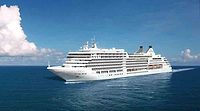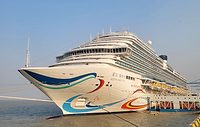Digital Tool Helps Ship Owners Improve Dry Docking Efficiency

AMSTERDAM — Owners and operators of shipping fleets can now better control their dry docking costs with a new digital tool developed by AkzoNobel.
Known as DryDoQ Insights, it closely predicts the condition of a vessel's underwater hull without the need for visual inspection. Using data analytics, it has a unique capacity to build a complete picture of the corrosion and fouling on the surface — helping to improve maintenance planning and increase efficiency.
The technology has been launched as a minimal viable product to one of the world's largest fleet operators, who will carry out testing and provide continuous feedback so that further developments and improvements can be made. The system is simultaneously also available to the wider market.
"As a premium solution and service provider for the shipping industry, we're always looking for ways to give our customers a competitive edge," said Michael Hindmarsh, the AkzoNobel Incubator Lead for the UK. "DryDoQ Insights enables vessel owners to make more informed decisions about upcoming dry docking requirements, which in turn will help them to better control their maintenance costs."
Massimo Rubesa, Coatings and Materials Specialist at Stolt Tankers Shipowning, added, "As a company that sees the value in exploring the latest innovations in terms of products and services for improving vessel efficiencies, we are pleased to be part of the conception of DryDoQ Insights. We look forward to further developing the tool, which has the potential to bring clear benefits to the industry."
The tool makes its predictions based on proprietary data enriched with multiple external data sources. It highlights specific areas for consideration, taking into account the specific vessel type, trading pattern and previous dry-docking events.
AkzoNobel's Marine and Protective Coatings business is a leader in big data analysis in the marine industry, with more than 40 years of experience. A range of digital tools has been developed for customers, including Intertrac Vision, which projects the effects that various coating scenarios will have on the hull performance of a vessel before they have been applied.
For more information on DryDoQ Insights, visit www.drydoqinsights.com.
Looking for a reprint of this article?
From high-res PDFs to custom plaques, order your copy today!






